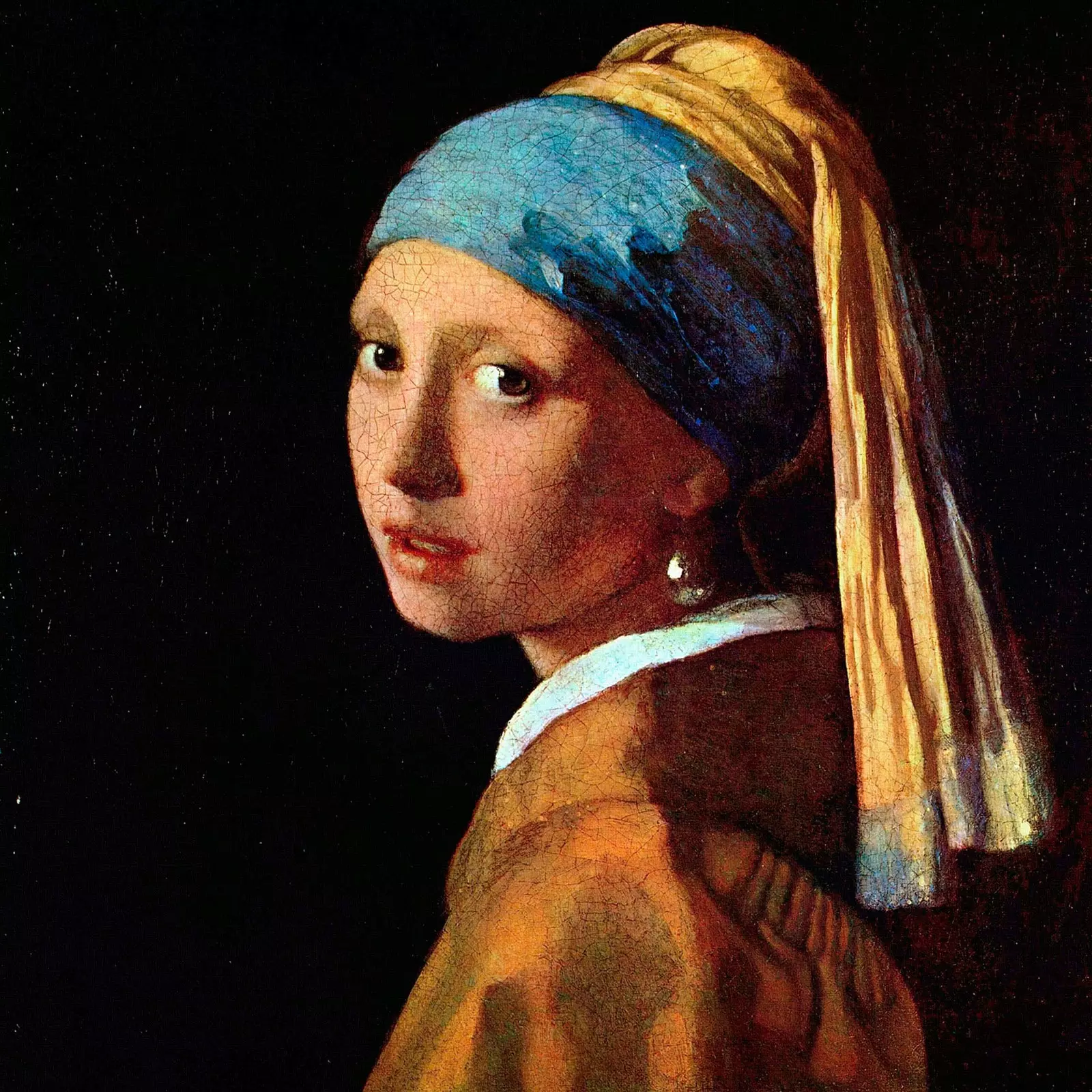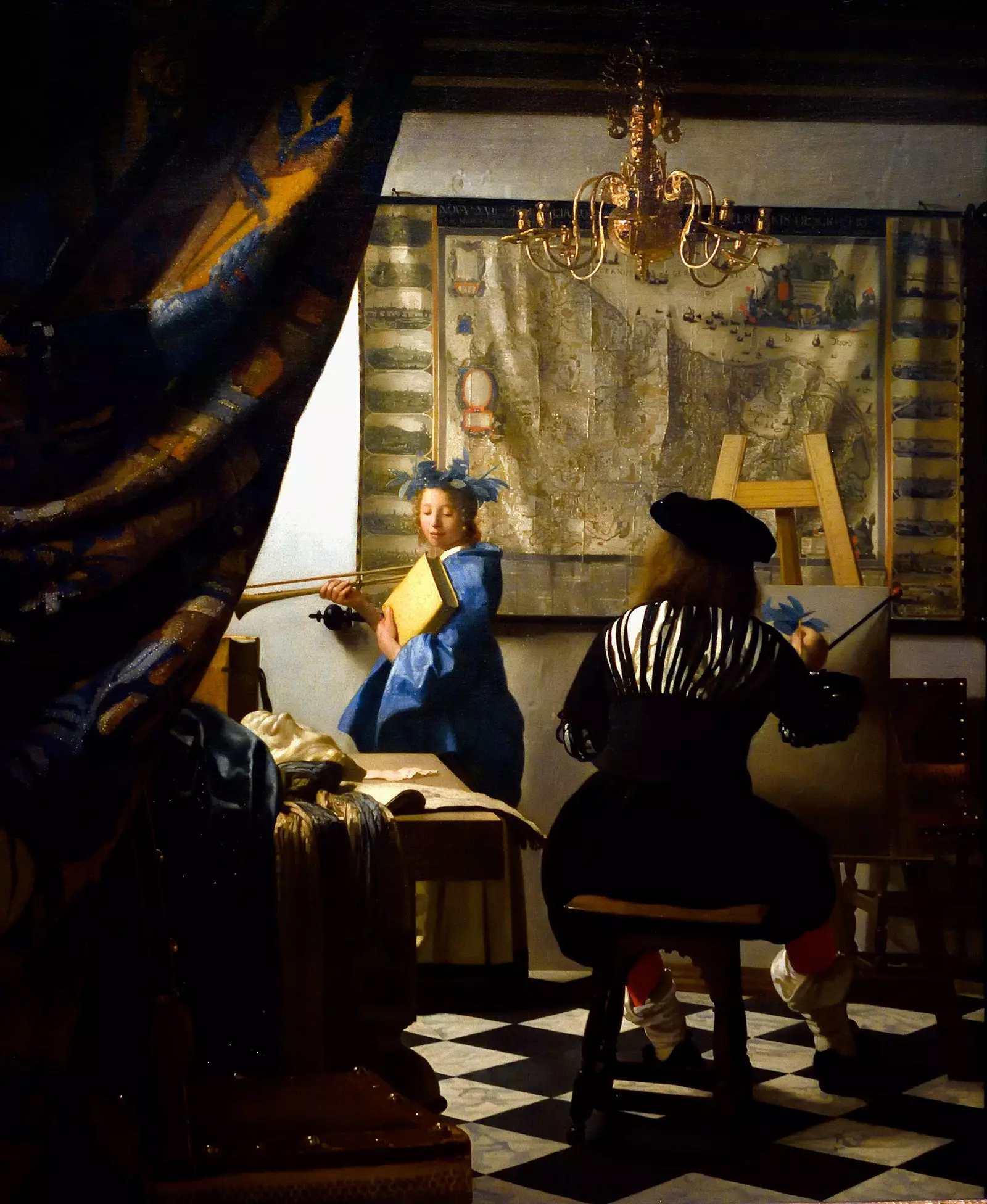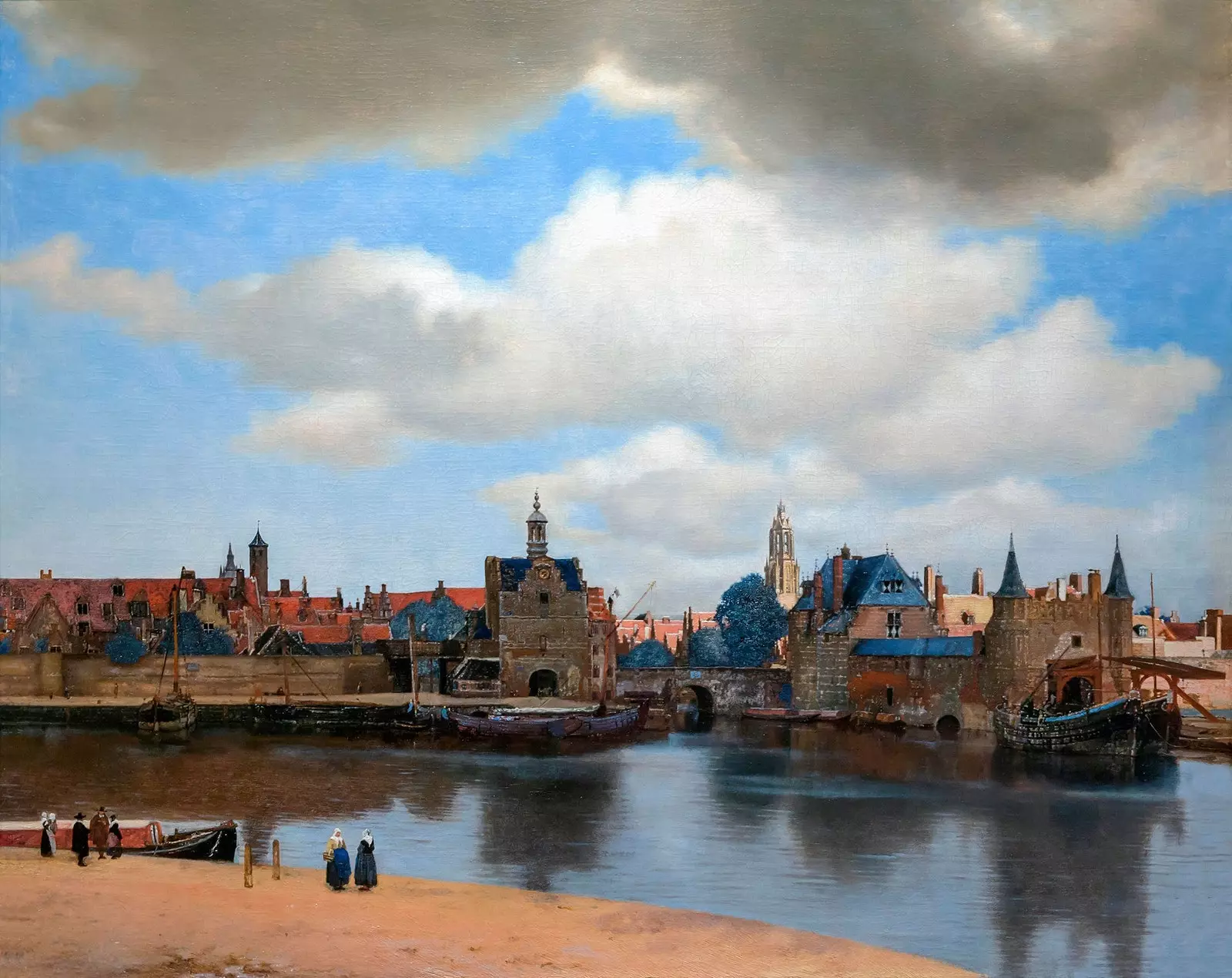
Journey to a painting: 'The Girl with a Pearl Earring', by Johannes Vermeer
Look how wonderful Look! But up close. Come on, come closer without fear.
If you are going to take this jewel, which I will have to get rid of because this is what I live for and what a remedy, you have to take a good look at it first. In my time pearls meant tears . What does the phrase sound like? of Lorca is . Of Bernarda Alba's house . But if this is a tear, it will be a tear of joy, don't you think?
look how beautifully the girl is painted , that the pearl is not what she wears hanging from her ear but all of her, with that prodigy of skin that is not known if it reflects the light or releases it. With those eyes that have been said to express modesty, or hesitation, or regret , or a bit of all that and maybe also the joke part of it, that has not been said but I say it now.

'The art of painting' by Johannes Vermeer
With that mouth. Or hadn't they noticed the mouth first of all? The lips are slightly cleft in the middle, and the teeth and the tip of the tongue barely show, like when we start to say something but the words haven't formed yet, and that's just a moment, a moment so light that no one notices. account unless by chance he has captured a photo. But there were no photos in the 17th century You know that and everyone knows it.
Now, I have to admit that whenever I look at the girl the first thing I see is that point of light in the corner . In that white brushstroke it concentrates the whole painting really, and everything that the painting means: the transience of the moment, the freshness of youth, the skill of the artist, the light that emerges from the darkness. The same is that in the end the pearl is going to be that.
And then there are the colors . Those of the Turkish turban, the shirt and the dress ultramarine blue , a expensive pigment that lapis lazuli had to be ground to make it, luteolin yellow, lead white, indigo, ocher. How it seems that the light makes them sprout from that dark background that they say was not so dark when it was painted and that it also had a greenish hue. They will not have seen anything like it.
I tell you that this work was painted Vermeer so that it would serve as a showcase for his talent, and that is why he put so much effort into making it so good. That's what the painters did. dutch baroque , almost all of them did it, some very effective portraits that they called tronies . The models used to be anonymous people, like this young woman who doesn't know who she could be, no matter how much they have made books that you may have read and even movies that you have surely seen. All inventions. The idea was not to distract people by looking for similarities, but convince her that the author was capable of painting whatever was put in front of him.
Well today we know that Vermeer was able to paint whatever was put in front of him and even what was left behind his back, but do you believe that in his time it was like that? Well, don't believe it.
Understand me, it's not that things went wrong for him. On the contrary, almost always commissions flowed from a very dynamic and very industrious bourgeoisie , because Holland was not Spain, where outside the Court and the church it was too cold for a pintamonas. In Holland, a cloth merchant or a brewer, the first thing they did was buy a well planted house and the second thing was to look for a brush of the best rank that would give shine to his inheritance. Vermeer was supported by a guy named Pieter Claesz van Ruijven , who began hoarding his masterpieces like someone who collects stamps. One of those stamps was the 'View of Delft' , which surely they knew was the favorite painting of Marcel Proust . I was not a fool, Marcel Proust. Nope, Van Ruijven either.

View of Delft by Vermeer
And yet this pearl escaped him, which after fulfilling his modest role as a sampler, he must have had a very bad life. So bad that it came to the 19th century made some foxes , and a military man named Arnoldus Andries des Tombe he ended up buying it for two and a half guilders, which if I tell them today's price in euros makes them laugh.
And that by then the world was beginning to learn that Vermeer was not just one of the many who painted domestic scenes in Holland. Neither that nor any lot, come on. Nevertheless, he died at only 43 years old and bankrupt , he was killed by the terrifying crisis caused by the Franco-Dutch war, of course. That her widow even had to beg the courts not to leave her with one hand in front of her and the other behind her, apart from the eleven children that had grown up for her, eleven, of whom today we know the names of ten. Do I tell them? Maertge, Elisabeth, Cornelia, Aleydis, Beatrix, Johannes, Gertruyd, Franciscus, Catharina, Ignatius . They are said.
Vermeer almost survived more children than paintings, and therein lies the grace . What is scarce is worth more, so fifteen years ago thirty million dollars were paid for the first work of his that was sold in almost a century. Well, there are still those who say that it was not a Vermeer but a colorful copy . But hey, I don't get in there, huh? I don't get involved, because everyone spends their own and I don't want to get scalded.
What I tell you is that a real Vermeer has the price of him. How long do you think I'm going to leave it for? How much does a masterpiece cost, an eternal icon of humanity, let's see?
Say a number. Let's go. Tell her!
